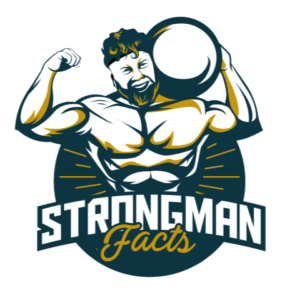An Old Time Strongman’s Guide to Strength Training
At the turn of the century, strongmen brought physical culture to the masses. While there was a fair amount of chicanery in their performances, the majority of strongmen were true athletes.
They practiced feats of strength like bent pressing (not to be confused with the bench press), card tearing, steel bending and other static holds that required prodigious tendon, hand and wrist strength.
1. Heavy Weights
Most of the strongmen who plied their trade in music halls and dime store museums were entertainers, but they also helped advance an interest in physical culture to the general public. They promoted the idea that lifting heavy weights as a means in and of itself was not just an enjoyable spectacle, but that it could be a practical part of men’s daily lives.
The strongest of them specialized in feats that required enormous amounts of wrist, hand and tendon strength, such as bent presses (not to be confused with bench press, which did not exist at the time) and supporting large amounts of weight held overhead at arm’s length. Those who did this type of training often trained with thick-handled barbells, which enhanced grip strength immensely.
A great number of the old-time strongmen were not only very physically powerful, but also very intelligent and good humourers. Their acrobatic acts were an entertaining sideshow, but they also showcased the kind of natural strength that anyone could develop, provided they were dedicated enough to train hard and eat right.
A modern strongman, like Mariusz Pudzianowskie, Jon Pall Sigmarsson or Zydrunas Savickas, would thrash the likes of those old strongmen in any competition based on pure brute strength. But the general strength, health and fitness benefits of this sort of training are undeniable.
2. Heavy Grip Work
In addition to classic lifts and exercises like squats, deadlifts and barbell jerks, strongmen also did a lot of grip work. They often used thick-handled dumbbells, which improved their grip strength tremendously and allowed them to perform feats of strength that many would have found impossible to do without the thick handles.
Among these included things like the bent press (not to be confused with the bench press), supporting large weights held overhead at arm’s length, chain breaking and steel bending, all of which required incredible amounts of wrist, hand and oblique strength. As a result, strongmen were often quite lean and ripped but possessed prodigious bone, tendon and ligament strength.
Some of the strongest men from that era are still known today as some of the best in the world without steroids and with nothing more than their natural brute force. However, they were not nearly as strong as modern strongman champions in terms of the things they could do with their hands and arms.
For those interested in training to be stronger than they think possible, there are plenty of good resources online to get started. A few things that stand out are that it’s important to use proper form, not to train to failure and to focus on incorporating exercises that develop grip strength in different configurations.
3. Mental Force
Strongmen incorporated support lifts, partials, and other movements that helped them to develop incredible bone, tendon and ligament strength. This is why even though these men were not as muscular as today’s bodybuilders they possessed extraordinary strength and power.
These men were able to perform incredible feats of strength without steroids and other performance enhancing drugs. Many of their feats still stand as records to this day. They were some of the worlds strongest men a hundred years ago.
They trained differently than people train today but they all shared some key principles. The majority of them favored compound lifts like deadlifts, barbell and kettlebell snatches, different types of presses, jerks, rows and other movements that utilize the entire body. They also emphasized proper form and avoided training to failure.
These old time strongmen knew the secrets to molding the mind and the body together. They understood that the power to be truly strong comes from within, not from a pill. By focusing the mind on your goals and staying dedicated you can achieve extraordinary results.
4. Healthy Eating
In the days of steak and eggs and singlets, strongmen ate for strength. They knew that eating right was the key to a great physique and they also understood the importance of getting enough sleep and staying mentally focused.
A strongman’s reputation depended on his ability to perform amazing feats. The public was fascinated with these men who could break chains, tow a ship, bend iron bars and horseshoes, and pull up a wagon on their backs. Often, they performed their feats in traveling sideshows and the circus.
Many of these old time strongmen were not only entertainers, but they helped to promote physical culture and fitness. During the 1800s and early 1900s, when most men worked in factories and on farms, strongmen became symbols of manhood and a reminder that people still had the grit and strength to tame the wild frontier and defeat nature’s enemies.
When it came to training, most strongmen excelled in classic lifts like the deadlift, barbell and kettlebell snatches, different types of presses and jerks. Unlike today, they rarely trained squats and bench press and tended to train to failure with relatively few reps. But they all emphasized the importance of proper form and staying focused on the goal to achieve maximum strength and power.



